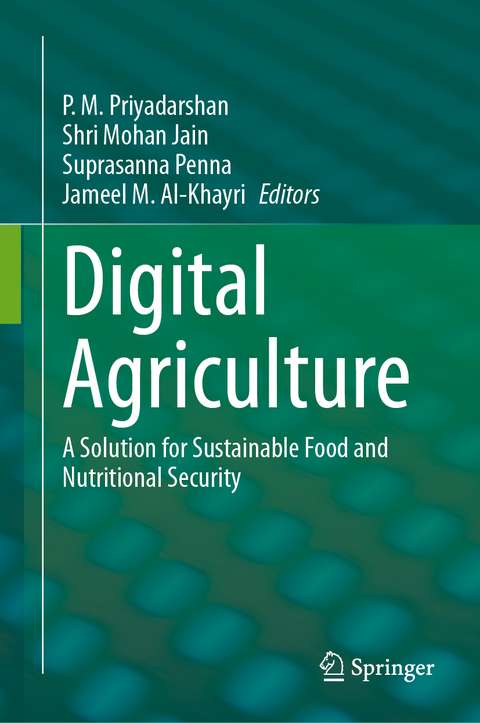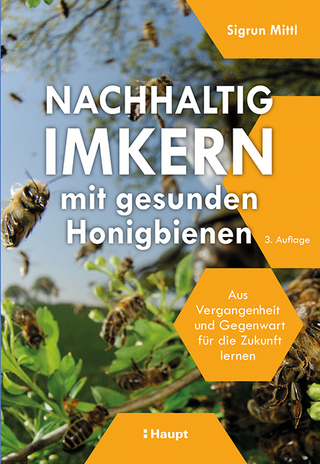
Digital Agriculture
Springer International Publishing (Verlag)
978-3-031-43547-8 (ISBN)
For these reasons, innovative technologies are being introduced in modern agriculture to sustain food production. They include digital and geospatial technologies to manage soil, climate and plant genetic resources. With the development of tools and sensors integrated into the internet of things (IoT) environment, physically collected information is converted into computer-readable language. Digital innovations thus allow real-time analysis, machine learning, and artificial intelligence (AI) that manage massive amount of data, also known as big data. Accordingly, digital agriculture affords greater potential for sustainable farming and economic benefits.
This book summarizes the latest advances in AI-integration of agriculture practices. Specific focus includes but not limited to, big data, yield mapping, pests management, and optimal fertigation. As such, it presents a forward-looking approach to meet multiple UN Sustainable Development Goals, specifically, SDG 2, 6, 13 and 15.
lt;b>P. M. Priyadarshan is a prominent Hevea rubber breeder. He began his research career by breeding triticale and wheat while doing M.Phil and PhD degrees at the Chaudhary Charan Singh University, Meerut under the guidance of Prof. P.K. Gupta. During the 1980s he focused on the in vitro culture of spices. He joined the Rubber Research Institute of India (Rubber Board, Ministry of Commerce, Govt. of India) as a Plant Breeder in 1990 and specialized in breeding Hevea rubber for sub-optimal environments. He was a visiting scientist at the Hardwood Tree Improvement and Regeneration Centre, Purdue University, U.S.A. In 2009, he became the Institute's Deputy Director, and managed its Central Experiment Station until 2016. He has been involved in breeding cereals, spices and Hevea rubber for 32 years. He is a reviewer of international journals, such as Industrial Crops & Products, Tree Genetics and Genomes etc. He has published many research papers in journals of international repute, such as Advances in Agronomy, Advances in Genetics, and Plant Breeding Reviews. He has edited/co-edited Breeding Plantation Tree Crops (Springer), Breeding Major Food Staples (Blackwell-Wiley), the Genomics of Tree Crops (Springer), and more recently, Cash Crops (Springer).
Shri Mohan Jain received his Ph.D. in 1978 from Jawaharlal Nehru University, New Delhi, India. He completed his postdoctoral fellowship in Israel, USA, and was a visiting scientist/professor in Japan, Malaysia, Germany, and Italy. He works in both academia and industry, and has served as a Technical Officer on Plant Breeding and Genetics at the International Atomic Energy Agency (IAEA), Vienna, Austria. Dr. Jain is on the editorial Board of Euphytica, In Vitro, Propagation of Ornamental Plants; reviewer in Plant cell and organ culture, Plant cell reports, and few others. He has published more than 165 peer-reviewed journals, book chapters, and conference proceedings, and edited 65 books. He has also been a consultant for the European Union, The Government of Grenada, Iranian date palm Company and the Egyptian Government.
Penna Suprasanna is the former Head of the Nuclear Agriculture & Biotechnology Division at Homi Bhabha National Institute (HBNI), Bhabha Atomic Research Centre, India
Jameel M. Al-Khayri is a Professor of Plant Biotechnology at the Department of Agricultural Biotechnology of King Faisal University (Saudi Arabia).
1. Digital Agriculture for the years to come.- 2. Agriculture and food security in the era of climate change.- Part. 1 Vertical farming and nurseries (both controlled and uncontrolled environments).- 3. Soilless smart agriculture systems for future climate.- 4. Intelligent Nutrient Controlling System for Precision Urban Agriculture.- 5. Vertical farming of Medicinal plants.- 6. Vertical farms in future cities.- Part. 2 IoT (internet of things) in agriculture for improved farm use efficiency, plant and soil management.- 7. Remote sensing in Precision Agriculture.- 8. Sensing Climate Change through Earth Observation: Perspectives at Global and National level.- 9. Satellite-based remote sensing approaches for estimating evapotranspiration from agricultural systems.- 10. Satellite imagery in precision agriculture.- 11. Applications of UAVs: Image-based Plant Phenotyping.- 12. Digital yield predictions.- Part. 3 Digital agriculture: roles in genetic conservation, speed breeding/fast forward breeding.- 13. Crop phenomics and high-throughput phenotyping.- 14. Speed Breeding for crop improvement.- 15. Digital agriculture for enhancing yield, nutrition and biological stress resistance.- 16. Plant-based Electrical Impedance Spectroscopy for plant health monitoring.- 17. Data analytics in agriculture/ Data science and artificial intelligence.- Part 4. Precision agriculture technologies.- 18. Sensing systems for Precision agriculture.- 19. Applications of Robotics in Agriculture.- 20. Analysing data from open sources to manage risks in food production.- 21. Crop modelling for future climate change adaptation.
| Erscheinungsdatum | 26.01.2024 |
|---|---|
| Zusatzinfo | XIII, 643 p. 137 illus., 131 illus. in color. |
| Verlagsort | Cham |
| Sprache | englisch |
| Maße | 155 x 235 mm |
| Gewicht | 1148 g |
| Themenwelt | Weitere Fachgebiete ► Land- / Forstwirtschaft / Fischerei |
| Schlagworte | controlled environment agriculture • precision agriculture technologies • Robotics • satellite imaging • unmanned aerial vehicle |
| ISBN-10 | 3-031-43547-8 / 3031435478 |
| ISBN-13 | 978-3-031-43547-8 / 9783031435478 |
| Zustand | Neuware |
| Haben Sie eine Frage zum Produkt? |
aus dem Bereich


